Detailed examples are a treasure for technical writers. They are a great way to understand and adapt to the best practices that can make your technical writing content stand out.
An example of good technical writing can help you identify phrases, words, and practices that can improve your content. They can also help you start writing a type of technical document you haven’t read before.
However, there aren’t only good examples of other technical documentation writing out there. A poorly written technical document example can also teach lessons on avoiding common mistakes. The example work allows you to develop a writing outlook to create successful technical documentation.
We will discuss technical writing and how you can write a technical document. We will also enlist eight technical writing examples that may help you write exceptional pieces.
- What is Technical Writing?
- 8 Best Technical Writing Examples
- 6 Steps to Craft the Best Technical Document in 2022
- Tips for Improving Technical Writing
- Conclusion
- Frequently Asked Questions
What is Technical Writing?

Whenever technical information is written and documented, it is technical writing. Technical writing contains all documentation for complex technical processes. It includes executive summary statements, reports, briefs, and much more.
It can also include high-tech manufacturing, biotech, aerospace, finance, IT, engineering, and supply chain information. The format of a technical document is no longer bound to lengthy user manuals; it must be distilled and presented unambiguously. It can also come in technical reports, emails, briefs, press releases, or policies.
8 Best Technical Writing Examples
Technical writing continues to be a high conversion skill in all professional workplaces. Its demand grows at 10% annually from 2014 to 2022 — faster than any other occupation. Therefore, it would be great if you learned to write complex documents for your organization, and we have prepared a list of technical writing examples to help you understand and write better.
1. User Manuals
Writing a user manual is a daunting task for a technical writer, as it contains all the instructions a user needs to operate a product or feature. Writing a user manual requires a combination of organizational and technical writing skills, so it is an essential example of technical writing to follow.
Before moving into the components of a user manual, make sure you have worked on three things for this type of technical writing: 1) collecting information, 2) choosing structure and style, and 3) putting the manual together.
Here are five major components of effective user manuals:
a. Procedure
It is the central part or body of the user manual that explains the process. The logical, numbered steps help the user solve the problem. Illustrations can also be used to facilitate component or experience visualization.
b. Content
Avoid technical language whenever there is a risk of isolating audience segments. The best way to make your content super easy is to imagine you are writing for a junior high school student. Tables and graphs can also be included to show how content sections relate, complement, and contrast.
c. Glossary of Terms
Every industry has its language and vocabulary. However, some users are not familiar with even the most commonly used terms. A glossary of terms serves as their reference and a home for each term. It eliminates the need for technical writers to restate and re-explain definitions repeatedly.
d. Table of Contents
As a general rule, if a user manual exceeds 10–12 pages, you must use a table of contents. The entries are listed in order of presentation with accompanying page numbers.
e. Precautionary Information
Notes of caution, warnings, and danger notices help user safety. They also help the manufacturer address liability concerns related to the product. Also, use universal graphic symbols to present each type of risk to the reader.
A user manual’s content can range from less than a dozen to hundreds of pages. The more complex the product or service, the lengthier the manual. In its ideal state, a user manual is a set of instructions presented in a style and format that helps quick reference and facilitates the product’s success in the market.
Unbounce’s user manual is a sublime example of effective user documentation. Their documentation is easy to navigate, with each step having its table of contents to make it easy to find. Refer to their user manual as a standard if you ever write a user manual.
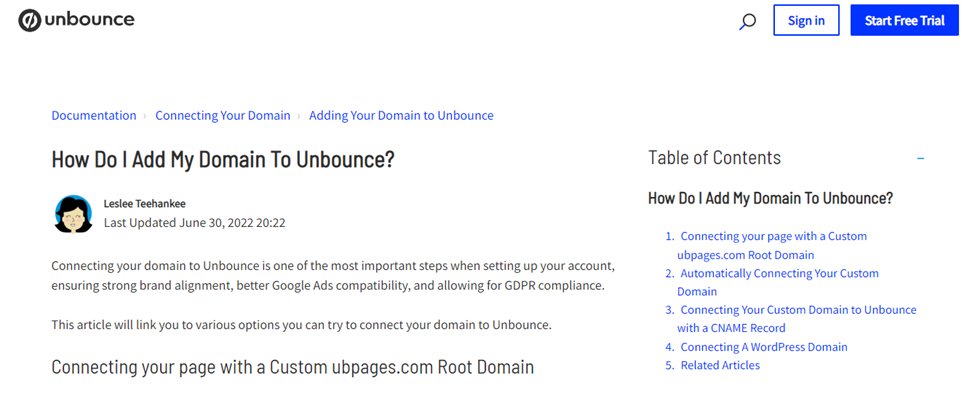
Example taken from “How Do I Add My Domain To Unbounce?” User Manual
2. API Documentation
Similar to the user manual, API documentation helps guide the user through configuring an API. Before we move to API documentation, let us reveal exactly what API is.
API is the short form for the application programming interface. It is like a bridge between your computer, mobile phone, or other application and external resources.
In simple words, APIs allow the software to interact with other software programs, resources, and databases. Since APIs are built by software developers, it is easier for a software developer to create the documentation.
Moving on to the next part of writing API documentation, here is what you must include.
a. An Overview
An overview is just like an abstract page of a project report. It contains a summary of the API and the problem it is solving. It also includes the benefits of using the particular API over similar ones.
b. Tutorial
It is the main instructional body of the documentation. A tutorial must include different content formats you are using to explain the concept of the API to the user. It also contains links for reference and a detailed guide for integrating and consuming the API so it functions properly.
c. Examples
Once you have explained how the API works and provided steps, it is a good idea to show examples of it. Examples of calls, error handling, responses, and other operations can help demonstrate how the developer interacts with the API.
d. Glossary
Although a glossary is optional, it is recommended for your API documentation. Instead of boring the user with long text blocks, explanations of various terms, images, and schemas can be pushed to the glossary. Then, you can reference these things in the documentation and link to the glossary.
Stripe API Reference is the best example of API documentation and a work of art. It includes a sleek, two-panel design, with explanations written in plain English on the left and handy code snippets on the right. It has all the crucial information one needs.
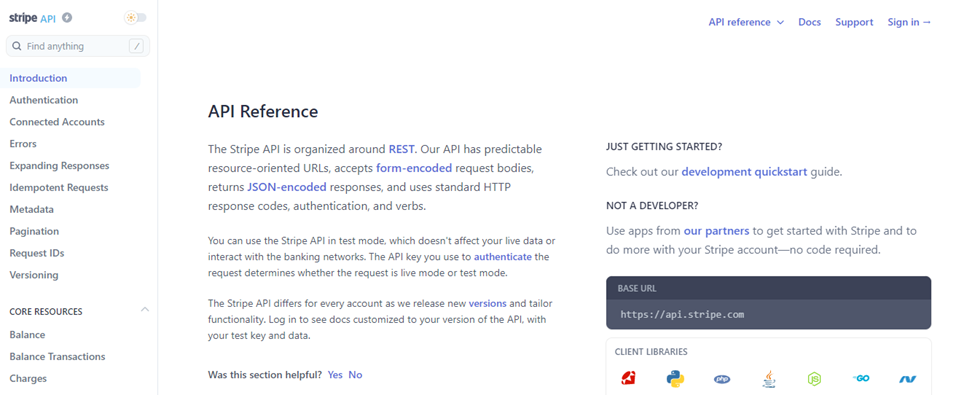
The example is taken from Stripe’s “API Reference” API Documentation
3. Standard Operating Procedures (SOP)
A standard operating procedure or SOP is a set of written instructions. They describe the step-by-step process of performing a routine activity. SOPs follow the same approach every time to guarantee that the organization remains consistent and complies with industry regulations and business standards.
SOPs provide the policies, standards, and processes required for the organization to succeed. They also benefit a business by reducing errors and increasing profitability and efficiencies. They create a comfortable work environment and generate guidelines for how to resolve issues and overcome obstacles.
Before writing the SOP, ensure the writers perform a risk assessment. It will help them determine any obstacles that may arise during the process. They should also consider the risk associated with those obstacles.
Here are the three components that comprise a standard operating procedure.
- Title Page: A title page lists the title of the SOP, what it is written for, its SOP identification, and the names and signatures of the people who prepared and approved the manual.
- Table of Contents: It provides easy access to the various sections in large SOPs.
- Steps of Procedure: It includes explanations of the task’s goal, roles and responsibilities, terminology, regulatory requirements, descriptions of what should be done to complete each step, and a discussion of decisions that must be made. It is the central part and takes the main portion of the SOP.
Once technical writers finish the draft, it must be reviewed, edited, and tested. The process should repeat until all stakeholders have written and approved an SOP. At this point, the SOP can be distributed to each person who needs it.
These technical writing examples record the production line procedures used to train employees and make products. It can also be used in finance and administrative environments to document the processes of customer finance collection. Examples of how an SOP is used can be found in a manufacturing environment.
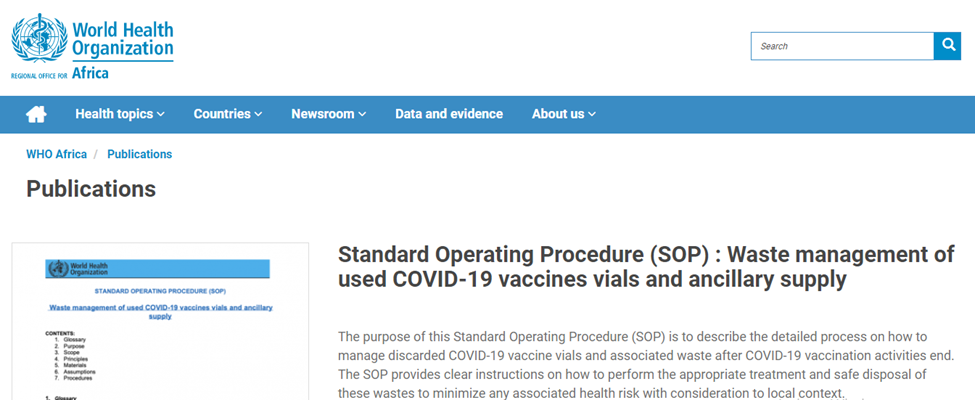
Example taken from WHO’s “Standard Operating Procedure (SOP) : Waste management of used COVID-19 vaccines vials and ancillary supply” SOP
Both case studies and white papers are the most potent and sought-after types of content. Both can help an organization generate leads for the business. However, both differ in purpose, audience, and funnel stage.
White Papers
A white paper is a technical document that helps readers understand an issue and devise a strategy to solve a problem or make a decision. It is a lengthy piece of content, at approximately 2,000 words or six pages. White papers can be practical to target people at all steps of the funnel.
One white paper can create awareness of a persona’s problem by targeting someone at the top of the funnel. While a second can focus on advanced product uses, targeting someone at the bottom of the funnel.
Technical writing examples like white papers include the following:
- Title page
- Introduction with a problem statement
- Background
- Proposed solution
- Conclusion
- References
Case Studies
On the other hand, a case study features extended testimonials on how a product or service helped a customer. It is shorter than a white paper and consists of around 800 words. These are best suited for the audiences at the top or middle of the funnel. Use these to create awareness of a problem and show how a solution worked for a real customer.
These technical writing examples include the following components:
- Executive summary
- Outlining customer’s challenges
- The leading reader through the customer’s journey
- Moment of discovery
- Writing solutions as the central part
- Walking reader through implementation
- Celebrating customer results
- Closing with CTA
Gravitate’s setting the stage for success is the best example of how to transform a detailed case study for an easier read. It introduces the customer to give visitors a little background of what they do. Then they dive straight into their role of helping the customer with a robust marketing strategy.
Global Trade Professionals Alliance’s (GTPA) Capacity Building And Standards Development For Inclusive Trade is the top example of a white paper. It starts with an overview of the problem, then states the role of GTPA in solving the problem, and finally, it reveals the outcomes and way forward.
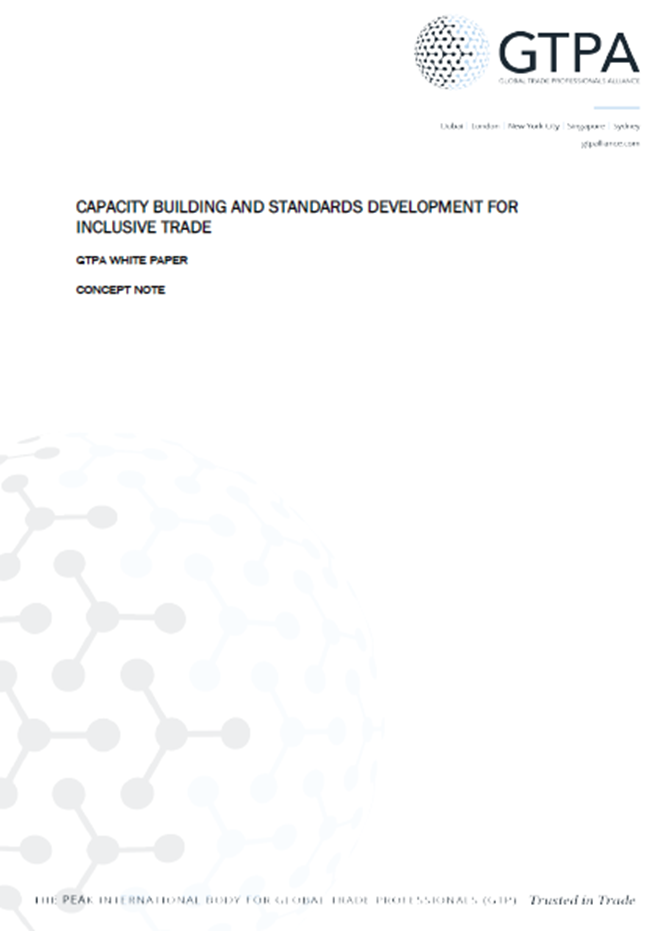
Example taken from GTPA’s “CAPACITY BUILDING AND STANDARDS DEVELOPMENT FOR INCLUSIVE TRADE” White Paper
4. Press Releases

A press release is a short yet compelling news story. These technical writing examples are written by a public relations professional and sent to targeted members of the media. Its goal is to press release the interest of a community or business. The press release contains all the necessary information for the journalists to quickly produce their stories.
It is also defined as a brief, printed statement highlighting significant facts of a news story in journalistic style. A press release can read like a news story, written in the third person but cites quotes and sources containing standard press release information.
Press releases are essential as they can be an excellent way to start a dialogue with a report. Journalists usually get dozens of irrelevant press releases every day. So, if you reach out to a reporter with a well-written press release, they may take notice and appreciate it. The press release also helps build credibility and control the narrative. Moreover, it can also build SEO traffic and increase customer engagement with your product or service.
A press release has six essential components. These include:
- Headline
- Summary
- Data and location
- Body
- Boiler place
- Ending
The top example of a press release is Hobby Lobby’s press release. Hobby Lobby is a nationwide retail store that issued a press release announcing an increase in the minimum wage.
With an ongoing debate on minimum wage, the store gave a newsworthy story for corporations to instill a minimum wage increase. Not only did this build a positive brand image, but it also helped attract and retain more staff.
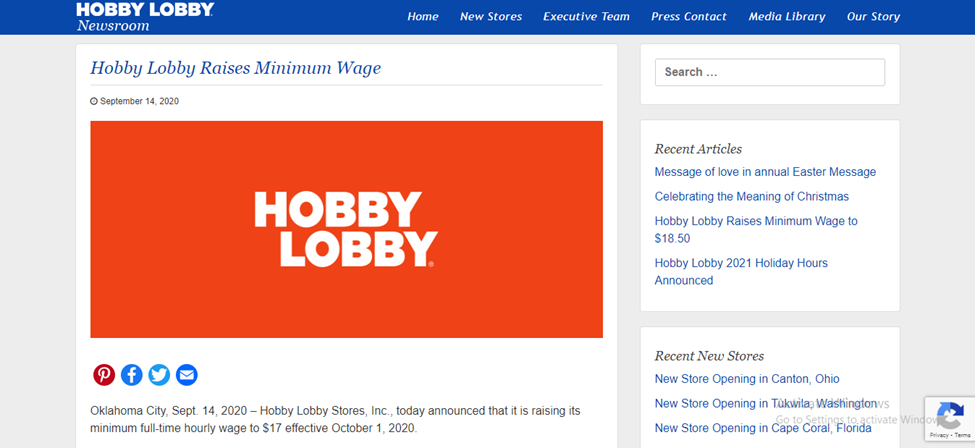
Example taken from Hobby Lobby’s “Hobby Lobby Raises Minimum Wage” Press Release
5. Business Plans
A business plan is a technical document that tells the company’s objectives in detail. It also describes the strategies for achieving these objectives. A business plan lays out a written guide for the firm from financial, operational, and marketing standpoints. Startups and established companies use business plans as their basic requirement. These technical writing examples are essential for a company’s external and internal audiences.
For instance, a business plan can be used to bring investment even if the company doesn’t have an established track record. It can also help secure lending from financial institutions. Additionally, a business plan keeps a company’s executive team on the same page about strategic actions. It helps them meet established goals. Sometimes, a business plan is created for a business that decides to move in a new direction.
Below are some of the most common components of a business plan.
- Executive summary
- Market analysis
- Products and services
- Marketing strategy
- Financial planning
- Budget
A business plan is not as difficult as one might think. It is a written tool about a business that projects 3 to 5 years ahead. It also outlines a company’s path to making money and growing its revenue. Think of your business plan as a living project for your business and not a one-time project. Break it down into mini plans like one for sales, pricing, marketing, and so on.
If you want to write your business plan, know there is no right or wrong way to write it. You can pick a plan format and start writing. It also helps you reach business milestones and get you the required funding. The important thing is that your business plan must meet your needs.
ThoughtCo’s business plan for a fictional company called Acme Management is the best example of a business plan. Its executive summary occupies nearly half the page. So, if you intend to write your business plan, follow this example as your guide.
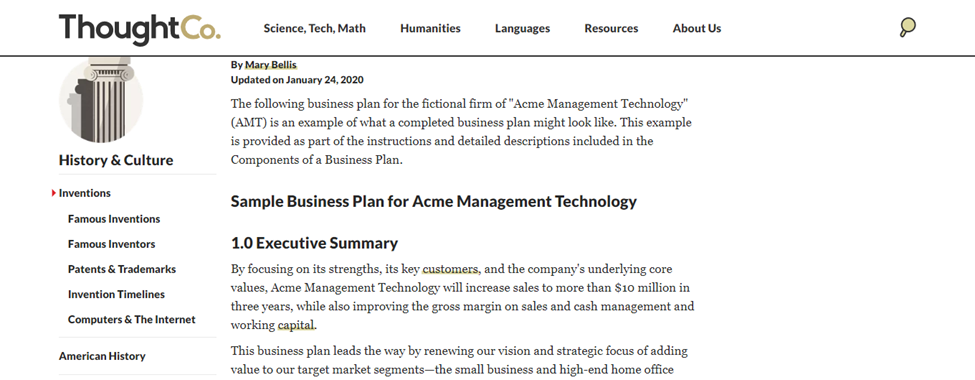
Example taken from ThoughtCo.’s “Sample Business Plan”
6. Company Documents
Business or company documents are written papers that represent you, your department, and your company. Whether it is external parties or other stakeholders in your organization, a company document will list them all. For precision, a company document is any sort of format document that is used for business purposes.

Multiple things fall into the company documents category. The list can be extended, but we will only include the most common things considered for a company document.
- Accounting Documents
- Reports
- Proposals
- Formal Letters or Memos
- Financial Documents
- Meeting Summaries
- Business Plans
- Customer Service Documents
- Operational Documents
How to Write a Company Document
A company document is not only a representation of your company but also represents you. So, make sure you do a solid job putting these materials together. If you don’t know already, here is how you write the best version of a company document.
First, start with an outline that is well-organized and highly structured to be effective. If you begin writing prematurely, the thoughts will be less structured and repetitive. So, before starting, always do three things: 1) generate ideas, 2) organize, and 3) structure.
Secondly, do not bury the lead. Do not hide the most critical information deep within your writing. In company documents, do not start with a bunch of fluff. You do not need to introduce anyone and build anticipation. A business document should be as streamlined and straightforward as possible.
Thirdly, use active verbs. You do not need to make your business document a thriller; neither should it be dry and bland. Instead, make your documents a little more engaging to keep the audience engaged.
Syngenta’s financial report is the perfect example of a business document. Please give it a read to understand the main components of an excellent company document.
7. Annual Reports

As the name suggests, an annual report is a comprehensive overview of a business’s achievements and financial statements from the preceding year. It also tells the financial status and vision for the future. It is produced annually and provided to shareholders, stakeholders, investors, and others to inform them of the business’s overall performance.
Today, businesses and organizations create different types of annual reports. These are used as a marketing tool for organizations to impress their investors and donors1, showcase their brand to employees and companies, and attract new ones. Each type of annual report is designed with a specific goal in mind.
A standard annual report for a public company must have:
- A letter from the CEO
- Corporate financial data
- Market segment information
- Operation and impact
- Plans for new products
- Subsidiary activities
- Research and development activities
Length and Components of Annual Reports
Depending on the size of a company, an annual report can range between 20 to 200 pages. Remember that actual human being read your annual report. So, it must not be filled with fluff. Make it easy to read, review, and understand for the concerned people.
The annual report’s main section should include the following as its components:
- Cover page
- A table of contents
- Mission and vision statement
- CSR initiatives
- An afterword
- Charts, graphs, and tables
- A glossary
Concerning annual reports, MailChimp’s name tops the list for great examples. With bold colors and playful illustrations, the 2020 report feels more like a video game than a regular annual report. It includes yearly traditional report content, like information about products and sales, as well as fun anecdotes about their culture and data about value-based initiatives they will take. As a result, an exciting and entertaining recap of the year is formed.
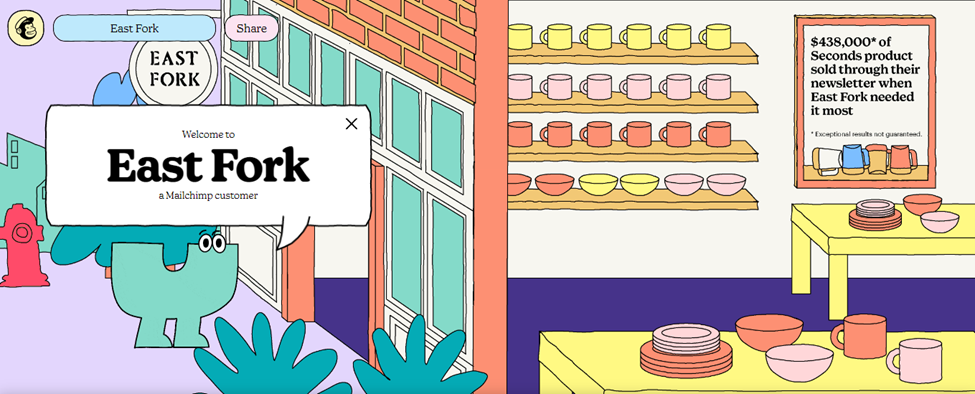
Example is taken from MailChimps’s 2020 Annual Report
6 Steps to Craft the Best Technical Document in 2022

After you know all the best technical writing examples, it is time to write one. But what if you write a technical document and no one reads it? To avoid this, here are six steps that one must follow to create a technical document that everyone loves to read.
1. Know Your Audience
Knowing your audience is indispensable, especially when creating technical content for a product or service. For instance, a cab driver may have a different level of knowledge and understanding than a doctor reading your SOPs.
So, before you write or even create an outline, make sure you have a clear idea of who your readers are. Knowing this lets you adjust your tone, vocabulary, and framing accordingly. It also helps you to meet your readers’ needs from their point of knowledge.
2. Do Your Research

As a technical writer, you have to guide your readers through unfamiliar territory. For this, you must know everything about that particular thing. Otherwise, it will be unwise to expect a tremendous technical document. Remember, you can only teach what you thoroughly know and understand. A knowledge gap is immediately visible when you are not thorough in your research.
The best way to do this is to place yourself in your reader’s shoes. Then, imagine you had zero knowledge of a particular thing. Doing this will force you to cover all the potential questions that come to your mind.
3. Craft an Outline
An outline is essential because it gives a roadmap of what to cover in your piece. It can also help identify knowledge gaps as you conduct your research. A longer form of technical content, like white papers and case studies, always requires an outline. It serves as their marker to remind you of what you need to include in your technical document.
Some technical writing, like business plans and annual reports, has predefined formats. You can also use a template in place of an outline.
All in all, crafting an outline is an essential component of writing great technical content.
4. Prioritize Readability

Technical writing is more fact-based rather than entertaining. So, to tackle complicated topics, use sentences that are easily readable and can make your work more enjoyable to read.
In contrast, if you are verbose in your sentences and use words that are hard to understand, you will only frustrate your reader. To improve the readability of your technical content writing, apply these tips:
- Use shorter, direct sentences that are easy to follow. Avoid passive voice wherever possible.
- Add subheadings to break up the long texts for better readability.
- Bold text and highlight paragraphs for emphasis and improving readability.
- Add hyperlinks for web pages to reference and navigate to other sections of your piece.
5. Add Visuals

A technical document is all about words and sentences, but if you add visuals, it makes both writing and reading easier. Adding visuals is becoming less of an option and a necessity today. With flowcharts, illustrations, screenshots, and more, a technical document needs a dose of visuals to look presentable.
Whether creating a user manual or business documents, your reader will be happy to see product drawings, pie charts displaying the numbers, and more.
6. Cut the Fluff
Once you have written the technical document, the final part is to double-check the facts and cut the unnecessary information.
But what exactly is fluff? Fluff is anything that does not add value to your content; instead, it negatively impacts the understanding of your text. It can be a word, a sentence, or a phrase — if you find it, cut it off. Every word in your technical document must add value to your reader’s life.
Once you know the steps to write a technical document, it is time to learn the tips that will help you write effectively.
Tips for Improving Technical Writing

Poor writing affects the reader’s understanding of the product. It also damages the reputation of the company. So, how do you make your technical writing more inspiring and practical? Below are the five tips that will make your technical writing skills superb, even if you are just starting to write.
- Stick to a technical writing style
- Use plain language
- Give important information first
- Clear sentence structure
- Don’t use passive voice
Good technical writing is not easy to achieve and often quite challenging to find. However, with these technical writing tips, you can take your writing to the next level and maximize the value you provide to your audience.
Conclusion
Now that you’ve read this guide with technical writing examples, remember the document you create represents your company. If it’s written poorly, the user will consider it useless, and the company’s reputation will be at risk.
On the other hand, if it’s written well and follows every instruction, it will enhance user understanding, and the company will attract more attention.
So, read this guide carefully and create your technical documents accordingly. Whatever type of technical document you write, follow the rules defined above, and they will improve your skills. Always keep; a note of your mistakes and things you have learned, and never stop honing your skills.
Frequently Asked Questions
Let’s take a look at some questions and answers:
What should be the format for technical writing?
Technical documents typically use single spacing, without indented first paragraph lines. Paragraphs are separated by an additional space.
What are the two purposes of technical writing?
Technical writing focuses on simplifying complex concepts to create easily understandable documentation for users. Clear and concise documentation not only aids users but also helps organizations enhance business processes by enabling efficient communication.
What are the primary characteristics of technical writing?
Technical writing employs specialized vocabulary to convey precise information about products and procedures. However, writers prioritize using plain language and avoiding overly complex terms to ensure comprehension. They rely on literal and straightforward definitions to convey information clearly.
What kind of language is used for technical writing?
Technical writing typically uses straightforward language, shorter sentences, and direct voice. This approach caters to a less knowledgeable audience who require information that is easy to understand and act upon without delay.
Where is technical writing required?
Technical writing is the most prevalent form of technical communication. It is widely used in various fields, including computer technologies, architecture, and engineering.